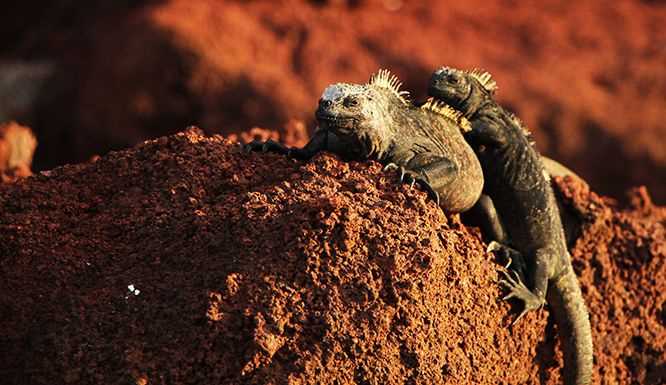In the center of the Galapagos archipelago is North Seymour, one of the most diverse islands in terms of fauna, though poor in vegetation mainly due to its low elevation.
Many species of sea bird can be found here, including the two species of frigatebirds, and one species of boobies. Magnificent and great frigatebirds have both chosen the island to live and nest, because finding fish in the surrounding waters is relatively easy and there is plenty of food to go around. There are many males at this time of year with their red pouches fully inflated, hoping to attract the females. Others are already engaged in incubation or taking care of the young, as well as feeding. In the same area, blue-footed boobies nest.
Another attraction is the land iguana; a prehistoric-looking reptile, which has lived on the island since the 1930s, when they were rescued from almost extinction due to predation and human activities on the neighboring island of Baltra. There were plenty of them to be seen today, showing a vast and quick natural recovery.
One of the best attractions of the Galapagos is without a doubt the sea lion, enigmatic creature well known for having such a charm that people love taking endless pictures of them. This and more makes this island a wonderful site for wildlife sightings.
After some navigation, we arrived to the island of Rabida, which stands out from the others for having red sand due to a large amount of iron oxide. The first activity that was offered upon our arrival was an opportunity to explore the fabulous marine life of the Galapagos. The group was divided in two, with the most experienced guests going deep water snorkeling from the Zodiacs, the less keen go to the beach for a gentler start. Both sites were equally amazing for the variety and exuberance of its content.
After our snorkeling outings, we went for a sunset stroll along the beach, taking in the beautiful landscape and abundance of wildlife. Sea lions are the best hosts.







